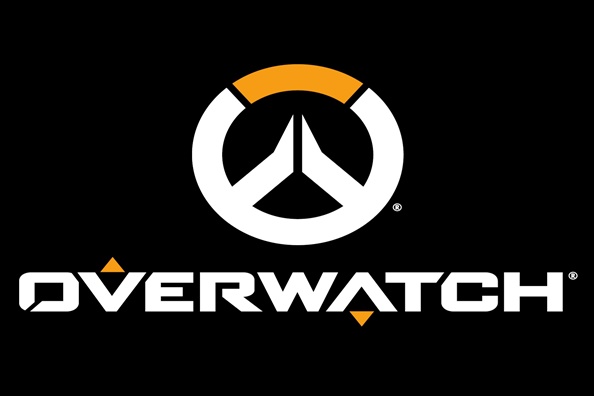Perhaps the biggest news in competitive gaming the past few months has been Blizzard’s announcement of 2-2-2 role lock queue (that’s a lot of words) for their popular team shooter Overwatch. This change–scheduled to officially come out in September after a two-week beta for competitive mode–is sure to completely alter the competitive scene of one of the most popular team-based shooters, but what does it all mean? And more importantly, is it really a good change? I’m here to let you know.
What is 2-2-2 Role Lock?
Overwatch’s new 2-2-2 system means that for every game, quickplay or competitive, people who are queuing up to play will be asked to choose one of three roles: tank, support, or damage. You will then be queued into a game with other players who choose roles that support your role so that each team will have 2 tanks, 2 supports, and 2 damage characters. Thus, 2-2-2. Once you choose a role to play, you can change throughout the match what character you play as long as it fits that chosen role. For example, if I have chosen support role and I’m playing Ana, but our team is getting shredded by an enemy Tracer, I can change to counter the Tracer by choosing another support character, like Brigitte, but not a tank or damage character, like McCree. When a match ends, you can exit the queue and choose another role to play for the next match.
This system will change a few things about competitive. First, your SR rank–a numerical value assigned to you that gives a rank-based idea of your skill rating–will be split up from one overall SR to three role-based SRs. In other words, you’ll have an SR for tank role, an SR for support role, and a third SR for damage role. I’m personally excited for this change because it will finally tell me what role I am best at, and as someone who has changed their main character from Tracer to Mercy to Reinhardt to Zarya to Sombra over the years, I’m looking forward to a more objective look at how I stack up in each role. Second, the 2-2-2 system will force players to branch out in what characters they play in each role. For example, I have always relied on my Reinhardt and Roadhog play to carry me through tank-flexing, but now with only one other person I can rely on to play tank when I queue for that role, I need to start grinding some matches with Orisa and D.Va in order to make sure I can be of the most service and flexibility possible to my team. As Overwatch Creative director Jeff Kaplan explained, “Just as Shakespeare created beautiful poetry within the restrictive confines of sonnets, so are we excited to see what players can do creatively within the boundaries of 2-2-2.” I believe the ability to flex–playing characters that fit the situation best rather than what one habitually plays–will become even more important in this new era of competitive.
Why the Change?
Before I get into this, here’s a quick look at some E-Sports terminology and trends. Usually in E-Sports, and especially in character-based or ability-based games like Overwatch, a meta develops. A meta is a way of playing a game that 1) is shaped by current conditions in the game and 2) seems to bring the highest rate of success to teams. The most recent and long-standing meta in competitive Overwatch was something called GOATs, so called because of the Contenders team (think minor league for E-Sports) that first successfully played it. GOATs consisted of three support characters–usually Lucio, Zenyatta, and Brigitte but sometimes Ana–and three tank characters–usually Reinhardt, Zarya, and D.Va. Since tank characters have such high amounts of health and these supports in particular were good at healing en masse, a meta developed where nothing died until ultimates were built. This was best demonstrated in an Overwatch League (OWL) game during which 14 ultimates were used in a single team fight yielding zero deaths. Before long, everywhere you looked GOATs was being played: OWL, Contenders, Tier-3 leagues, Top 500 in Competitive servers, even some of the lower ranks were using GOATs simply because it was “the best.” Players were quickly getting burnt out on the game due to its repetitive and slow-moving meta, and several changes that the Overwatch Team made to characters were aimed at breaking the GOATs meta but were unsuccessful. Popular streamer and former OWL athlete Dafran infamously regarded the Torbjorn rework as meaning “GOATs is over!” only to go back to playing the composition in competitive several days later.
GOATs is the primary reason why 2-2-2 has come to Overwatch. Streamers, coaches, and commentators alike had been clamoring for some kind of role lock, and the Overwatch Team finally tested their ideas enough to give us a system that they believe will work. By definition 2-2-2 will kill GOATs–it’s literally impossible to play a three-tank, three-support composition now–but what will it really look like in practice? Luckily, we have seen a little bit of it in action through OWL.
Does it Work?
It seems to. Since 2-2-2 has been implemented in OWL, there have been a ton of exciting games between teams who, in the previous meta, had performed very poorly simply due to a lack of strong tank or character-specific players. If you couldn’t play Brigitte in GOATs, you simply lost. But now, in just the first week of stage 4 in season 2 of OWL, we saw every single character get playing time as well as some strong Mei and Tracer play; Bunker, Dive, and Clockwork compositions; and terrific standout damage-role performances.
The 2-2-2 system is currently on the PTR (prior to release) server on PC, so while console players haven’t gotten to experience it yet, streamers have been quite vocal about their love for it. OWL athlete Jake has called himself a “big fan” of the change, and popular broadcaster Wolf Schroder has identified several positive developments in just the first couple of weeks of stage 4. Popular streamers who had previously left Overwatch due to a stale GOATs meta have returned due to 2-2-2, such as TimTheTatMan. Players have reported that such common troubles in competitive like 5-damage players with no healing and players having to switch off their primary role in high-SR games will be a thing of the past. However, not all feedback has been positive.
Some people have expressed concern over the lack of freedom 2-2-2 offers. Main Tank players have reported that GOATs was one of the few metas that allowed their specific role to really shine, and several casters and streamers have warned that all the role-locking systems in the world won’t change how toxic and abusive some of the environments in Overwatch are. Others have judged 2-2-2 to be an overreaction to GOATs, saying that DPS comps were already beginning to make a comeback and that GOATs took extremely high levels of coordination and skill to even pull off successfully in the first place. While some bemoan the restrictions on team composition 2-2-2 creates, others don’t buy it. Top 500 streamer Redshell said on stream in reference to such constraints, “It took us like 6 months as a community to even figure out that Orisa and Hog play well together; I’m not sure we’re the best ones to say if something is too restrictive or not.”
With my PC funds still being tied up in graduate school, my console-playing ass doesn’t have a first-hand impression of 2-2-2 for you yet. However, as someone who watches a lot of OWL, I can say that the last couple of weeks have been the most fun I’ve had watching pro play since the league first came out. For better or for worse, 2-2-2 is the future of Overwatch, and with a change that Kaplan and his development team took so painstakingly long to release so that it would work correctly, they have my confidence that it will work in the end. After all, the less Brigitte for me, the better.




